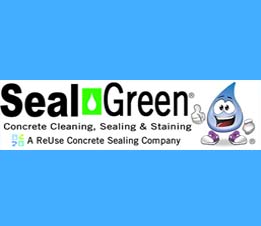The following article was reproduced in part with permission from its author and can be seen in its entirety at www.seedirtrun.com See Dirt Run is a PWNA certified contractor based in Maryland and has written numerous articles that pertain to the art of power washing. They were nominated in early 2003 to instruct the wood care boot camp in Las Vegas. There contribution to the science of this profession is greatly appreciated.
Stain Vrs Paint
Courtesy of See Dirt Run, INC.
Wood expands and contracts naturally with the temperatures because it is a porous material that nature designed to accommodate its environment. Paint does this as well according to formulation but lacks the proper coefficient to do it at the same rate that wood does, in other words wood fluctuates at a different rate in response to temperature changes than paint does. What this does over time is cause cracks and peeling in the paint which then obviously needs maintenance. This process is sped up further by not being able to completely coat the wood as mentioned previously. Moisture penetration compounds the situation further causing peeling along the sides of the wood and promoting mildew and algae growth which feed on the paints oils absorbed into the wood substrate causing a deterioration of the surface structure.
Maintenance of this condition requires scraping of the flaking and peeled areas followed by a recoat which does not always evenly fill in the cracked and peeled areas. This leaves an unlevel condition which is not visually desirable. The older areas being coated will soon reach their life expectancy and begin to fail by cracking, peeling and flaking. The cycle goes on and on. The results are a continually degraded finish that once has shown to need complete replacement will be next to impossible to accomplish short of a complete sanding job on the entire deck. Power washing the surface to remove the failing paint will only tear up the wood and many of the commercial strippers available do not work well in outdoor applications due to the highly evaporative nature of stripper itself.
Stain unlike paint does not contain many of the ingredients paint does that lack flexibility to give an outdoor structure the compatible protection it needs. Since not all surfaces are accessible to application in the way paint needs to be applied, oils provide the moisture protection by thorough penetration of the surface and migration deep into the substrate and surrounding area of application. They carry with them the resins which will eventually solidify and create a barrier to moisture and biological attack. The color remains towards the surface to do its job of UV protection and beautification. 1 coat is usually sufficient, 2 coats if a wet-on-wet application is recommended.
Wear from use and exposure to the sun and the weather breaks down the surface components which erode away. Periodically, the maintenance required to rejuvenate the finish consists of washing the surface with an appropriate cleaner and then recoating once the surface is dry. Depending on the stain products composition, the stain may need to be removed completely which is easily done with a stripping agent that can be neutralized.
Painting overall:
Takes a primer to give any duration capability which adds a step to the process involving time and material costs.
Requires 2-coats to be effective in an outdoor environment.
Requires time intensive methods to maintain.
Will fail by cracking, peeling and flaking.
Is costly to remove and replace.
Does not expand and contract at the same rate of the wood it is applied to.
Is better suited to use on home exteriors such as siding, trim and frames.
Staining overall:
Does not require a primer, saves money and time on labor.
1-2 coats applied same day, faster completion.
Does not fail by cracking, peeling or flaking.






